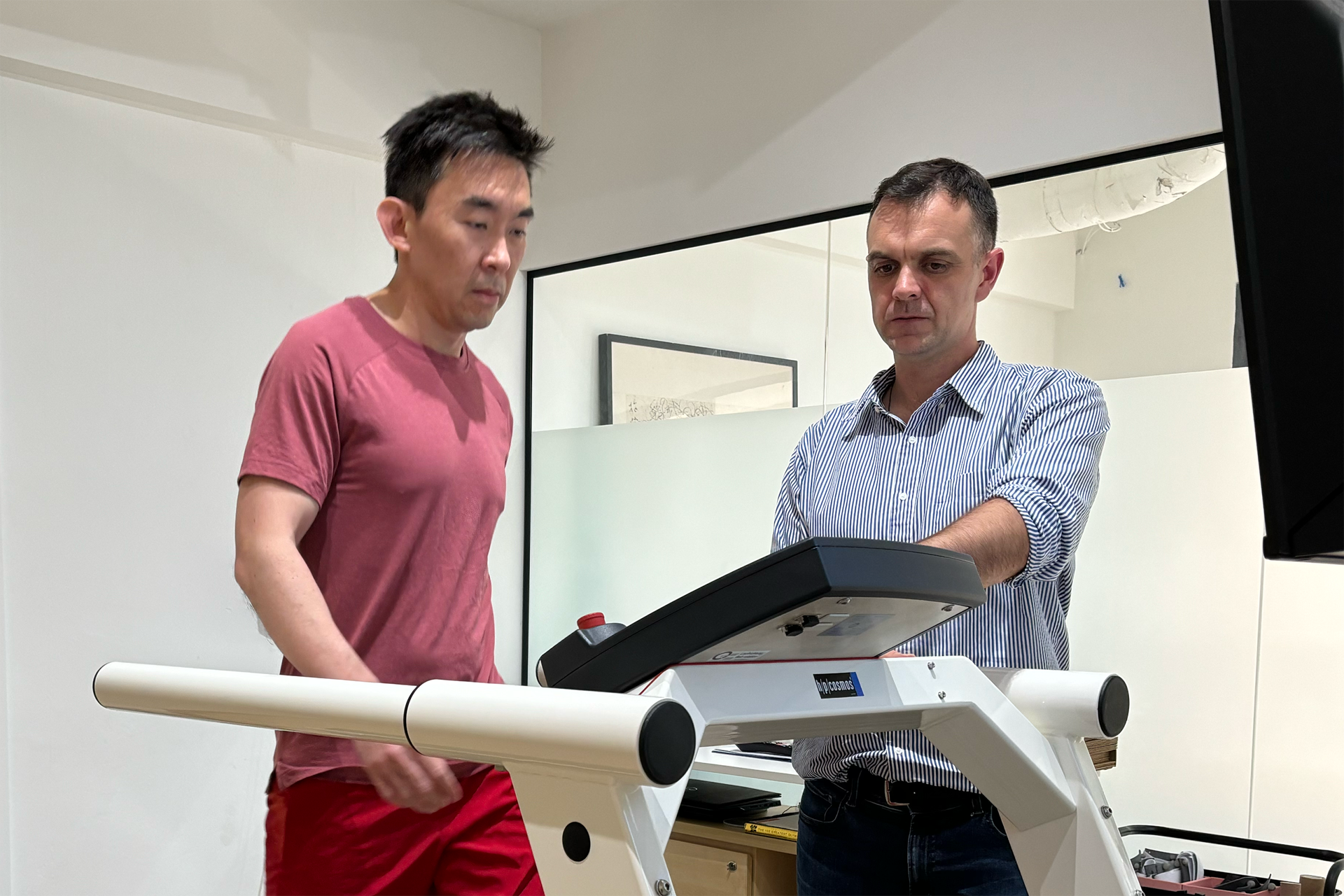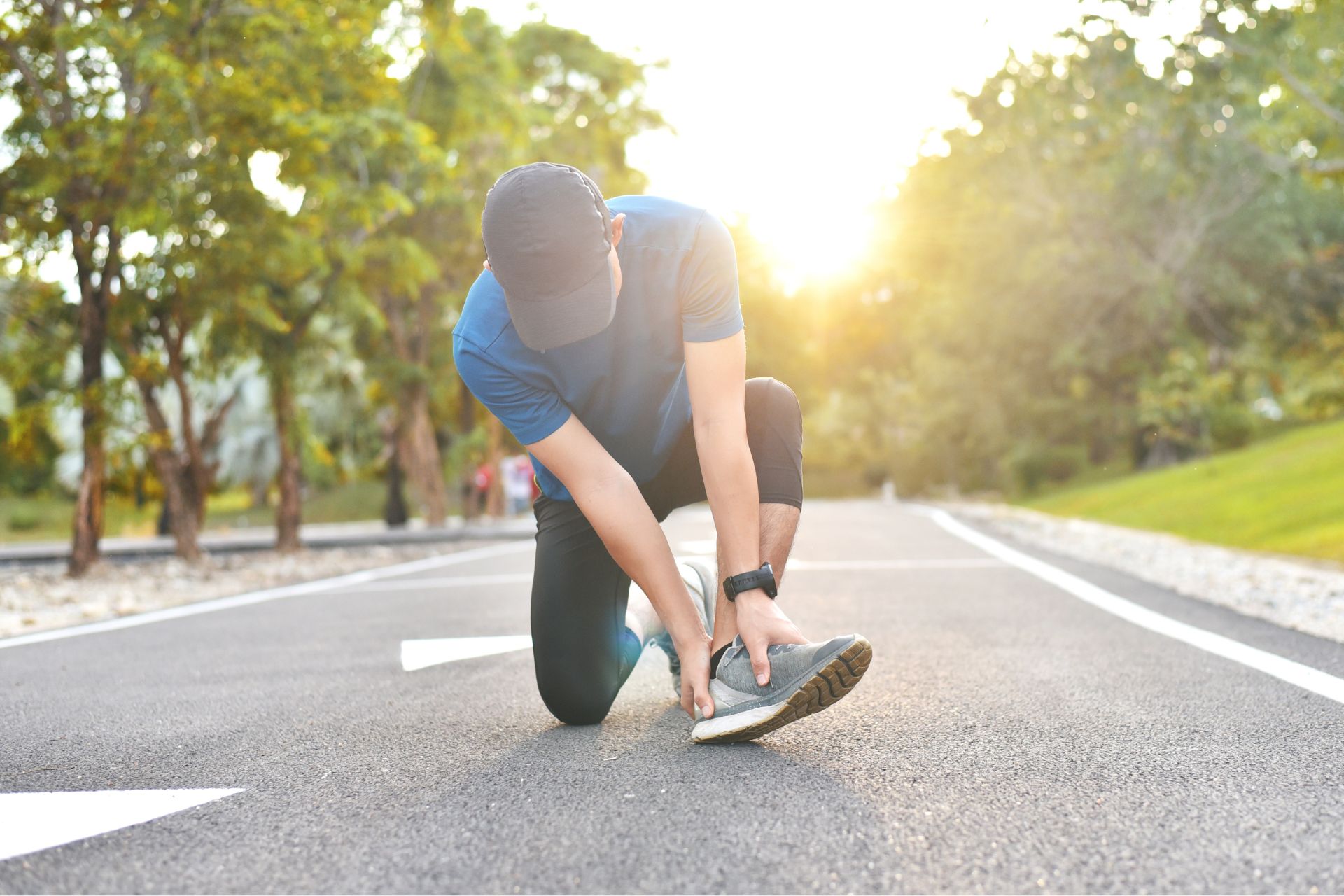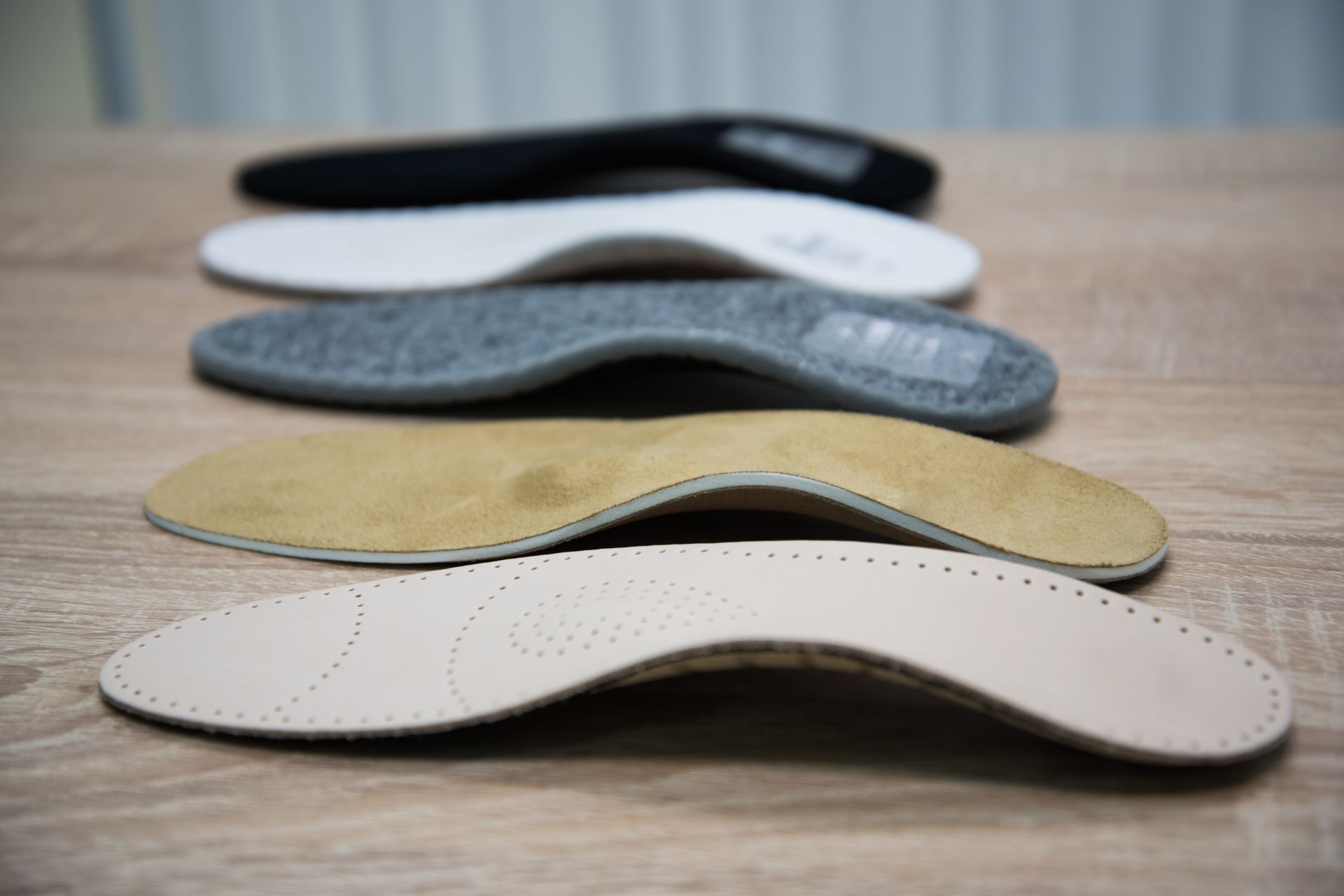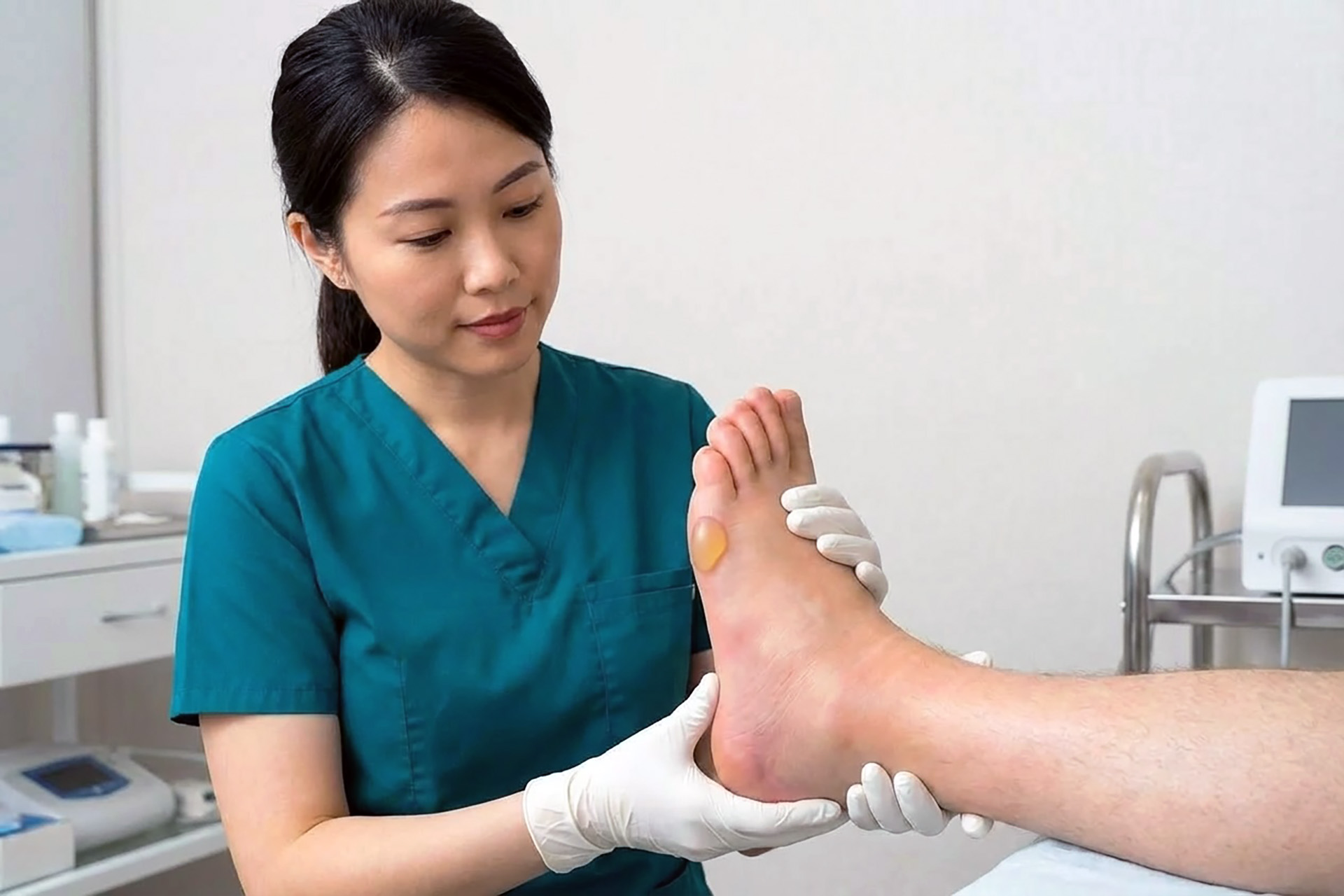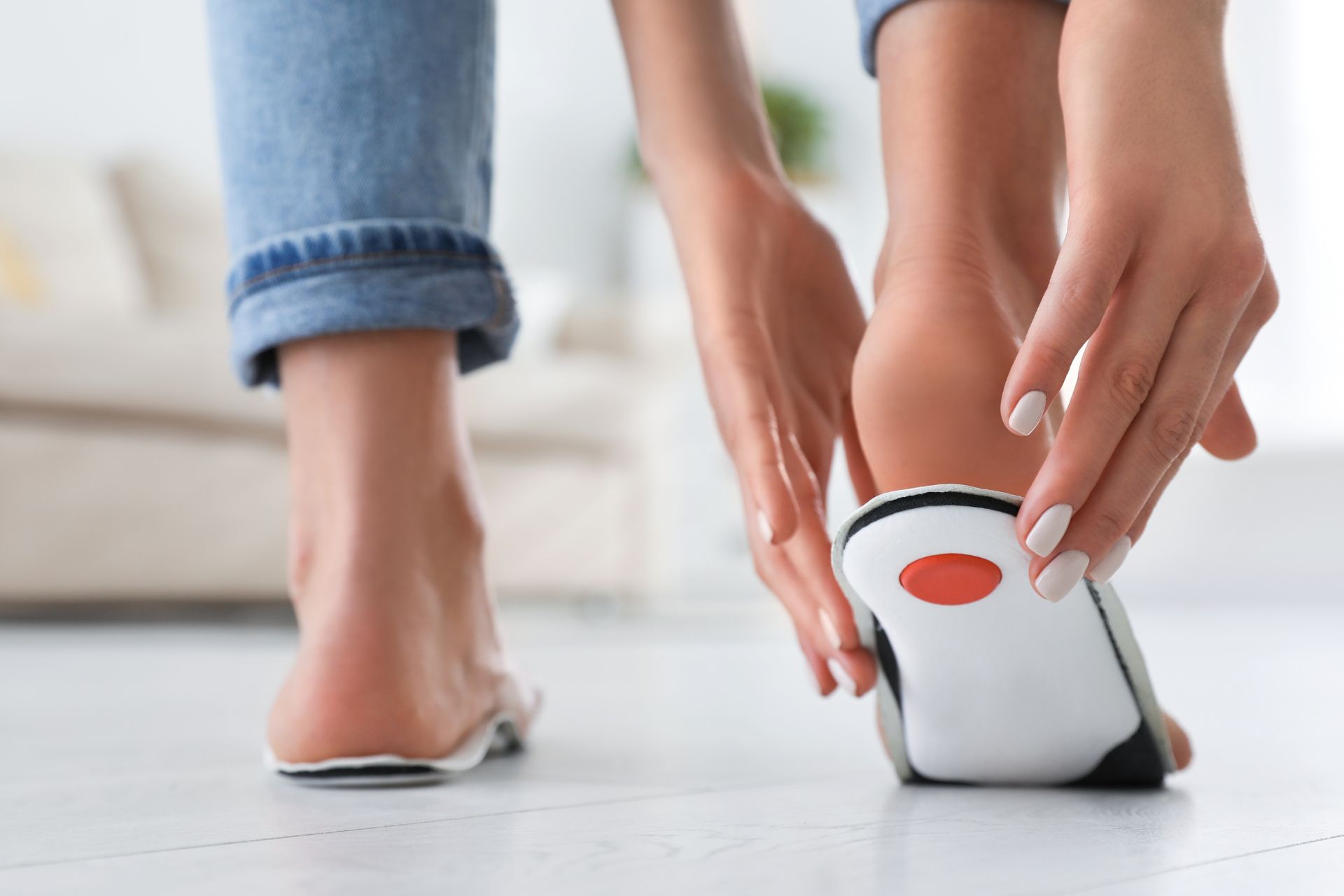The roar of the crowd, the pounding of feet, the relentless pursuit of your personal best – for runners, the quest of the sub-4-hour or even sub-3-hour marathon pace is a huge motivator that pushes you to be better than what you ever thought you could achieve when you first started training.
This determination can also lead to a hairline crack in the bone or a runner’s stress fracture, waiting to widen under relentless pressure.
A nagging ache in the shin and a dull throb in the foot can morph into months of sidelined frustration if ignored, shattering physical progress and your spirit.
The risk, unfortunately, is a common companion for runners (and high-impact athletes) as their bones are under constant siege from repetitive forces. Young athletes, in particular, with their skeletons still growing, are particularly susceptible, highlighting the need for awareness and proactive measures.

“By understanding your specific running patterns that contribute to stress on the skeletal system, prioritising prevention, and recognising the early signs of a stress fracture, we can facilitate targeted interventions to improve performance,” says Tim Maiden, lead podiatrist at The Foot Practice. “Using a capacitive pressure sensor treadmill alongside 3D gait analysis software enables our team to precisely evaluate an athlete’s foot mechanics and pressure points during motion.”
For example, identifying high-pressure areas under the foot can guide the customisation of orthoses to redistribute weight more evenly for a softer impact. Similarly, analysing gait patterns helps recommend footwear that supports natural movement to optimise energy efficiency while addressing biomechanical imbalances.
Together, our tools backed by data assist in optimising training loads and movement efficiency, reducing the risk of bone stress injuries by tailoring solutions to each athlete’s unique biomechanical profile.
To Run — Or Not — with a Stress Fracture?
Lacing up for a run when you’re nursing a stress fracture might feel like a test of willpower. Yes, running gives you that instant dopamine hit and boost of happy endorphins, but it may be better for your body to take a break.
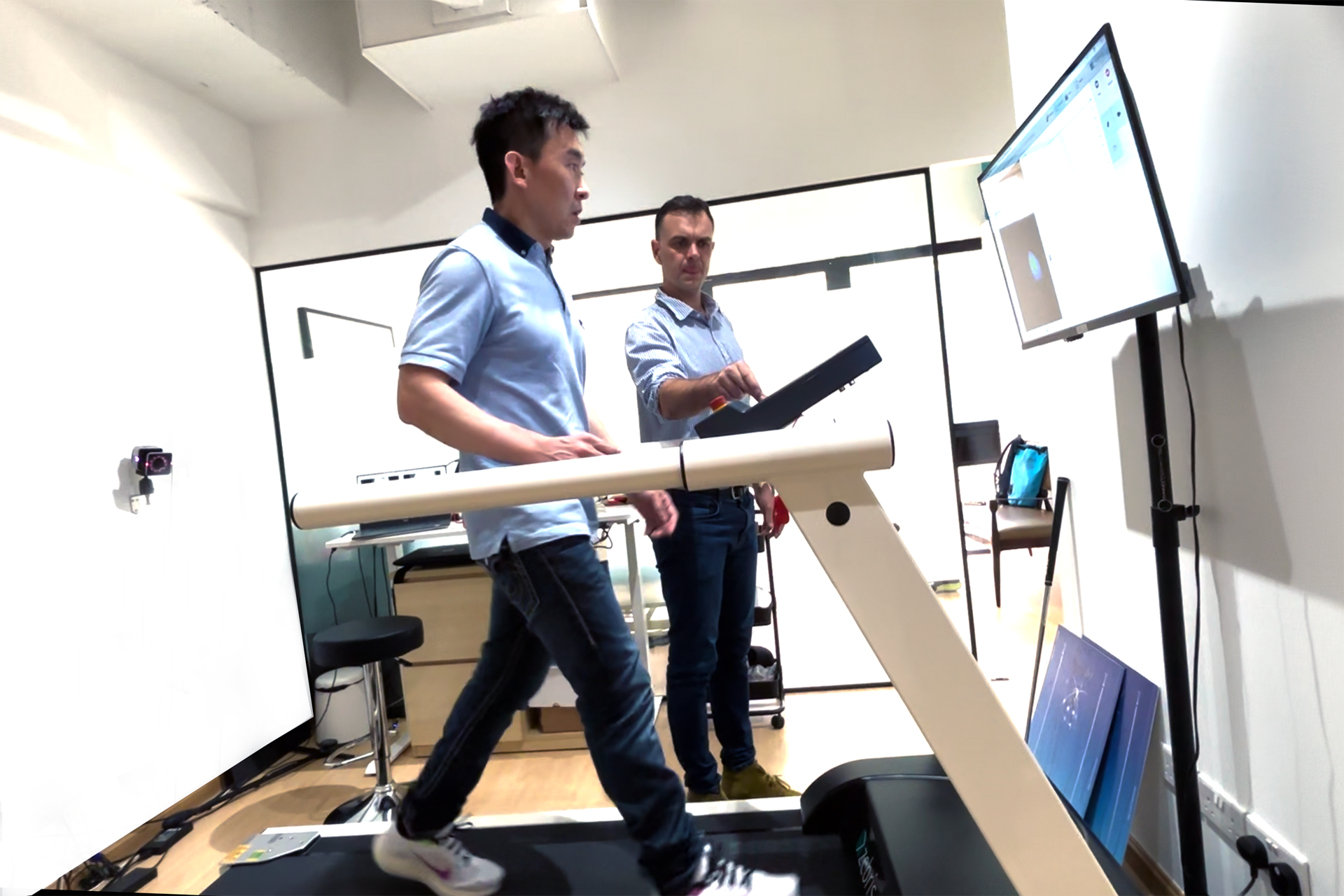
Running with a stress fracture is generally not advised due to the risk of worsening the injury. Clinical research emphasises the importance of rest and gradual activity reintroducing after 2 to 6 weeks of non-weight bearing for low-risk fractures.
The journey to recovery begins with a necessary break—think of it as a pit stop in your running journey, allowing your body the time it needs to repair. For those less severe sprains, a brief hiatus followed by a careful comeback can make all the difference. However, tread lightly with more serious injuries, especially hip or shin running stress fractures, where rushing back to exercise can lead to complications.
High-risk fractures, which include locations like the femoral neck and anterior tibia, require even more caution due to their propensity for non-union and significant morbidity.
Under the watchful eye of a medical professional, a personalised recovery plan becomes your roadmap back to the tracks, safely steering you towards your running goals without missing a beat.
Pressure Sensor Tech Pinpoints Gait Imbalances Across the Body
The Foot Practice’s advanced Rehawalk® pressure sensor and force plate treadmill are designed to identify precisely gait imbalances and pressure points along a wide range of injuries. Here are some of those categorised injuries:

MAKE AN APPOINTMENT
Metatarsal, Fibula and Heel Stress Fractures
For lower leg and foot injuries like metatarsal, fibula, and heel running stress fractures, our pressure sensor force plate treadmill offers a nuanced analysis of how pressure is distributed across the foot during motion. This can identify specific areas where excessive load may contribute to injury. With this precise data, professionals can recommend footwear adjustments or design custom orthotics tailored to redistribute pressure evenly across the foot, alleviating stress on vulnerable areas and facilitating more balanced, injury-free running.
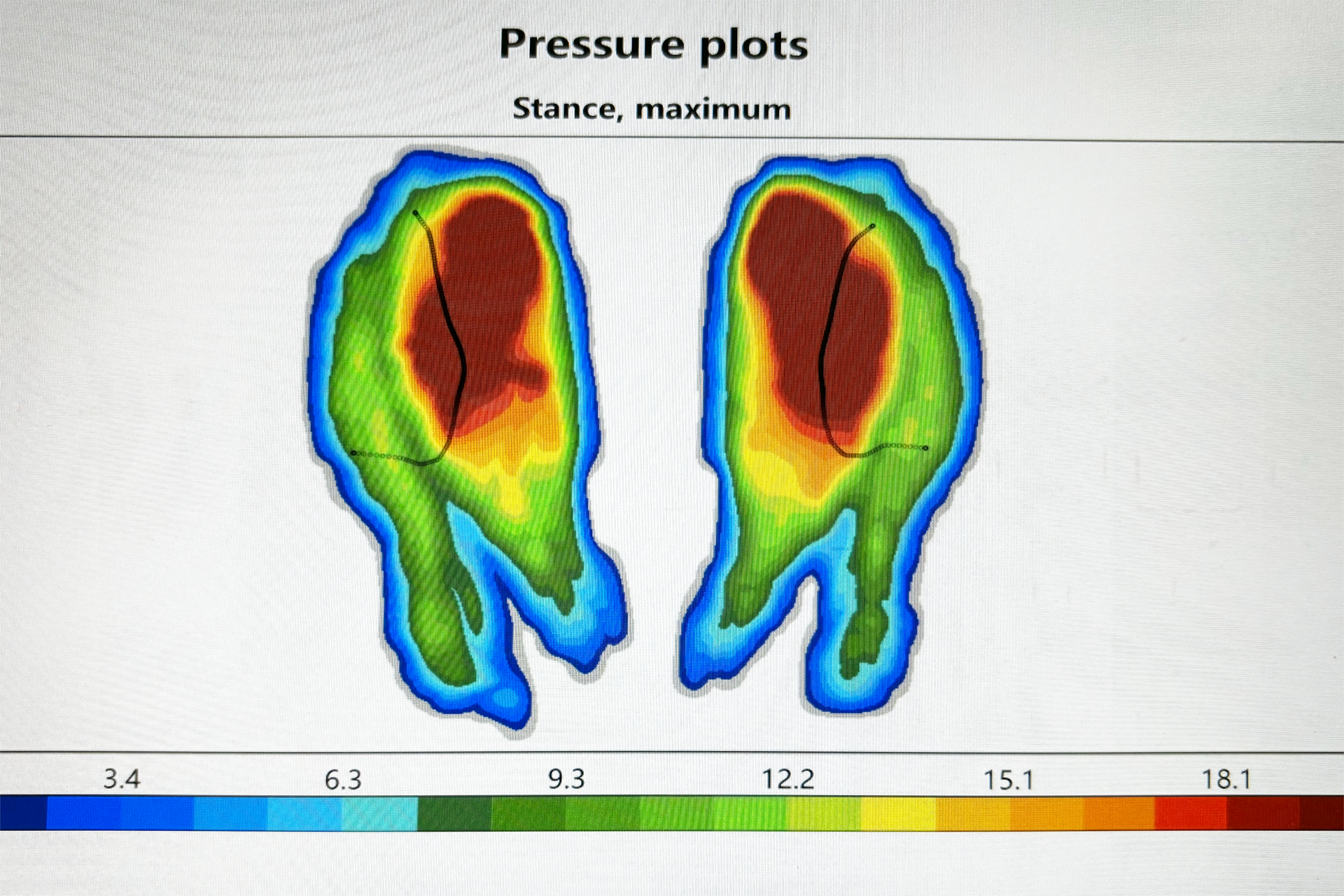
Hip Stress Fracture Symptoms and Running Pelvic Injuries
In hip and pelvic injuries, our sensors assess the impact of pelvic and hip movements on running, aiding recovery strategies and preventing recurrence. This analysis can identify where the body is overcompensating, creating undue stress on the body. Using this knowledge, your podiatrist can design a special recovery strategy to strengthen those muscles, correct imbalances, and reduce the chances of future injuries in your hip and pelvis.
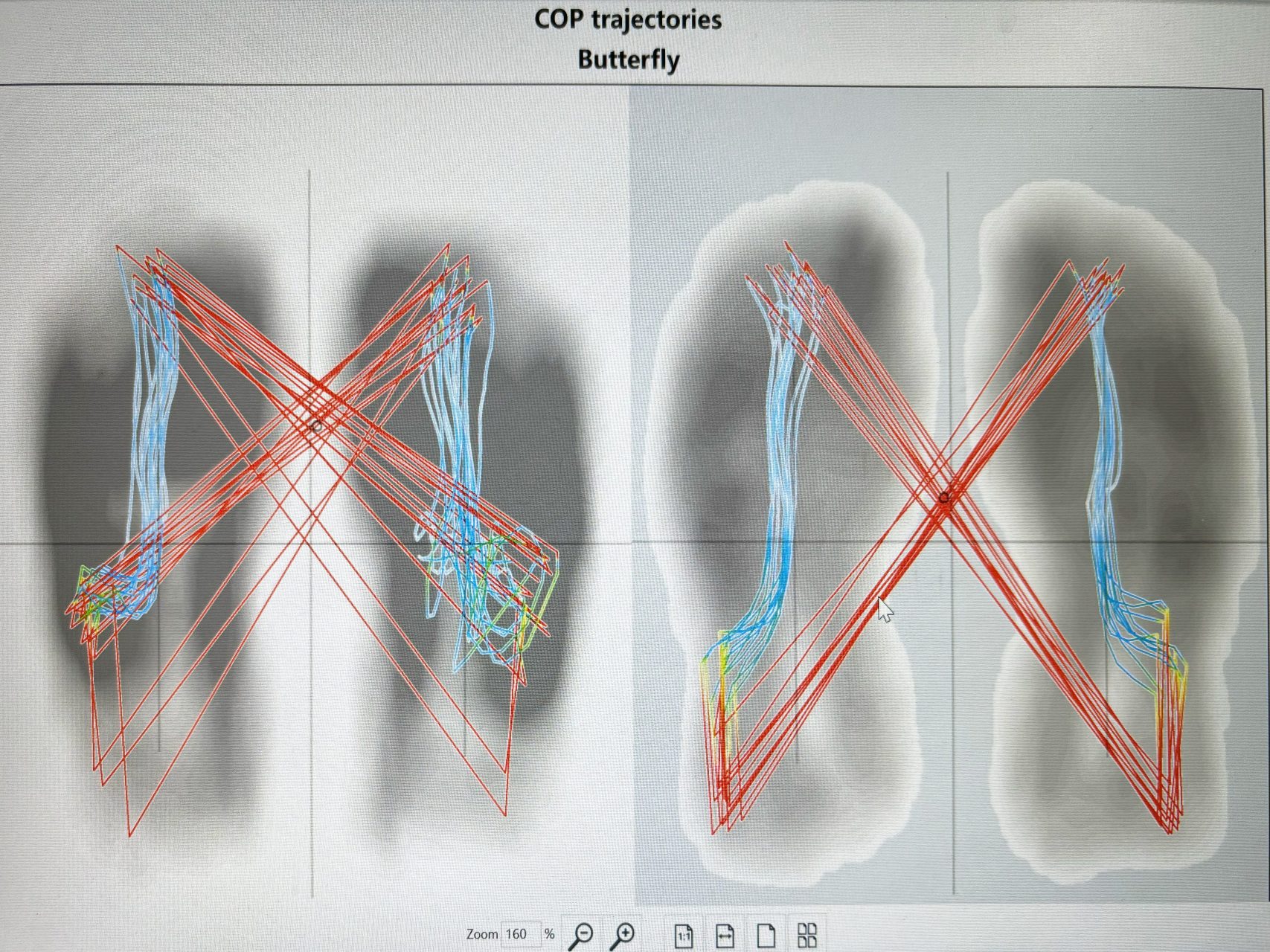
Sacral Stress Fractures and Pes Anserine Bursitis
It’s hard to know if the problem in the foot is a soft tissue injury or bone stress. The Foot Practice’s advanced Rehawalk® and 3D infrared gait analysis technologies can help distinguish between sacral stress fractures and pes anserine bursitis. From there, we can design customised rehabilitation plans targeting the root of the injury to ensure the recovery journey suits you and your body.
Prevention and Lifestyle Shifts
The heart of our mission at The Foot Practice is providing accessible, clinically relevant recommendations for foot health. Part of that means empowering you by preventing running stress fractures before they can sideline your progress.
Imagine your bones as intricate, living structures, constantly undergoing ongoing ‘renovations’ to adapt to their demands. When training intensity or terrain changes abruptly, these microtraumas struggle to keep pace. Tiny cracks appear through overuse, and the once-resilient bone structure can become fragile.
This is the essence of a stress fracture – a cry for help from overworked bone tissue. However, unlike a sprained ankle or a torn muscle, the pain often manifests as a dull ache, easily dismissed as muscle fatigue or soreness.
Rapid increases in training volume or intensity, especially on challenging terrains, overload the bones, leaving them vulnerable to microtrauma. Improper footwear or biomechanical imbalances can exacerbate the problem, creating uneven stress distribution and increasing the risk of localised fractures.
Preventive Recommendations by Our Sports Podiatrists
Prevention, as always, is the strongest defence. Here are some helpful tips on ensuring you don’t end up in a vicious cycle of stress fractures, recovery, training and injury.
1. Ditch the sudden leaps and embrace a steady ascent.
As the saying goes, slow and steady wins the race. This applies not only to the race but also to training for it. Progressive training allows your bones to adapt to the increases in pressure, while rest days give your body crucial time to repair tissue and remodel bone. Listen to your body’s signals. Don’t fight the warning signs.
2. Integrate foot strengthening and flexibility exercises into your routine.
Throwing in other low-impact activities like swimming or cycling is not only fun for your routine, it can be helpful for your bones and tissues. They offer a respite to overworked bones and build strength across your muscles. Strong muscles are an essential line of defence, as they act as shock absorbers, mitigating the impact on bones and reducing stress fractures.
3. Your shoes are your foot’s best friend, so choose wisely!
Shoes aren’t just about style but are also critical to foot health. So, think beyond aesthetics and how your shoes support your feet. While proper footwear offers crucial support and shock absorption, it’s not the sole (pun intended!) line of defence. Consult a running footwear specialist, like The Foot Practice’s sports podiatry clinic, for a personalised footwear assessment to discover the best running shoes to prevent stress fractures and that match your activity level.
The terrain you conquer also plays a role. Abrupt transitions from soft tracks to unforgiving pavement or uneven trails can significantly increase bone stress. Building training sessions on diverse terrains can improve adaptability, and mindful progression remains key.
4. Let’s talk about weight, not as a burden, but as a factor to optimise.
Maintaining a healthy weight distributes pressure on your feet more evenly, significantly reducing the risk of stress fractures. Remember, it’s not just about exercise; it’s about embracing a holistic approach that nourishes your body from within and fuels your active lifestyle.
5. Pain, even the subtlest ache, is never a friend to ignore.
Early diagnosis and proper medical attention are paramount. X-rays, bone scans, and sometimes MRIs can confirm the presence of a stress fracture. Ignoring the problem in hopes of “playing through it” can lead to complete fractures and significantly longer recovery times. Remember, the longer a stress fracture festers, the longer the road to recovery, potentially jeopardising not just upcoming competitions but also long-term bone health.
6. Prepare, perform and recover.
Warming up before activity preps your muscles and bones while stretching afterwards helps them cool down and recover seamlessly. Think of it as warming up the engine before a race and letting it cool down afterwards. You don’t want to go from 0% to 100% and then drop back to 0%. It’s not just about performance. It’s about longevity and keeping your body in shape.
How An Expert Can Help With Your Stress Fractures
For athletes, pushing limits is the name of the game. Pushing past the body’s warnings invites a different kind of challenge.
So, even if you take into account every preventative strategy, there’s a chance you could still get a stress fracture. That competitive spirit can have you ignoring the advice you know to be true, and you may just be too excited to train and get faster. That’s why, on top of preventive strategies, regular foot health screenings play a crucial role. These check-ups allow for early detection of potential issues that could lead to stress fractures, ensuring that minor problems are addressed before they escalate.
Integrating these recommendations into your daily habits provides a proactive approach to preventing stress fractures. The Foot Practice’s podiatric team is eager to support you in making these lifestyle adjustments, enhancing your sports performance and health.
So, lace up your shoes, fuel your body wisely, listen to your body, and conquer your goals with newfound awareness. The finish line awaits, not just for victories in the competition but also for safeguarding against unnecessary bone stress and running stress fractures!

